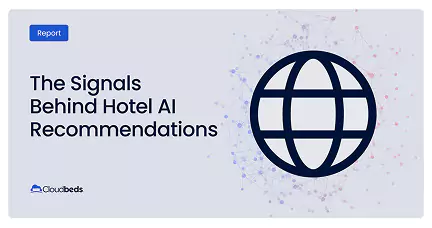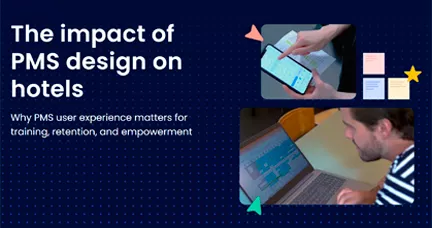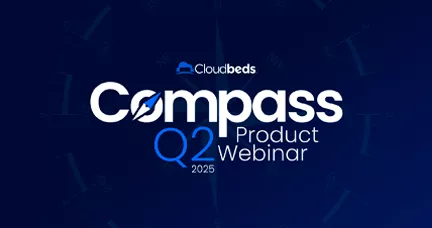
In most hotels today, marketing and revenue teams operate in parallel, often pulling in different directions.
Revenue managers are tasked with optimizing pricing and availability to maximize overall revenue, balancing rate and occupancy based on forecasted demand. Meanwhile, marketing teams work to generate demand and drive bookings, measuring success with metrics like return on ad spend (ROAS) and cost per acquisition (CPA).
This misalignment plays out daily. For example, marketing might celebrate a flash sale’s strong ROAS, while revenue feels rooms were discounted more than necessary, hurting overall profitability. As a result, the hotel’s bottom line suffers.
What if these teams worked from the same data, toward shared goals, and made decisions together? That’s the promise of revenue marketing—an approach that unifies marketing and revenue strategies into one coordinated profit engine.
What is revenue marketing?
Revenue marketing is a strategic approach that brings together the goals and metrics of sales, marketing, and revenue management around a single priority: total profitability.
In this model, marketing and revenue management share access to wider datasets beyond historical data and booking pace, to include PMS and CRM insights. Together, they create strategies where revenue identifies optimal rates, marketing designs personalized campaigns, and sales ensures strategic partnerships and group business align with the hotel’s overall profitability goals.
Why revenue marketing matters for hotels today
The hospitality industry has long recognized that siloed departments limit profit potential.
A qualitative study in the Journal of Revenue and Pricing Management revealed that revenue managers saw room-centric strategies as insufficient to hit financial goals in competitive markets and felt they should take on a more strategic, cross-functional role.
Diogo Vaz Ferreira, Head of Commercial at Clink Hostels, explained this disconnect in an episode of The Turndown, saying:
Sometimes companies put a revenue manager in the corner with Excel and a calculator. The Director of Sales promises discounts to corporate clients that revenue management won’t approve. Marketing runs campaigns with deep discounts misaligned with pricing strategies.
Tune in to The Turndown.
Listen to the full conversation with Diogo Vaz Ferreira from Clink Hostels.
So why hasn’t revenue marketing always been the norm?
Until recently, hotels lacked the unified tech infrastructure and real-time data access needed to make coordinated strategies possible. Marketing, revenue, and sales often operated on separate systems, with different KPIs and limited visibility into one another’s decisions. And while AI and automation are becoming more common today, they weren’t widely accessible or trusted to support strategic collaboration at scale.
That’s beginning to change thanks to several converging trends:
- Siloed teams miss opportunities. There is increasing awareness that when marketing spends budget to fill nights that would’ve sold out anyway, profitability suffers.
- OTA commissions are rising. Hotels spend ~$50B annually in OTA fees, giving up control and margin.
- Personalization is expected. Generic email blasts no longer drive results—guests want relevance.
- Tech makes this possible. Integrated PMS, RMS, and CRM data—combined with AI—let hotels analyze demand and launch campaigns in minutes instead of weeks.
5 key principles of revenue marketing
Let’s break down the five key principles of revenue marketing:
Each team chases different metrics and produces separate reports from systems that don’t communicate. Revenue management obsesses over Traditional KPIs like email opens, clicks, or even occupancy rates can become vanity metrics. Revenue marketing puts profitability first, focusing on net revenue, contribution margin, and channel efficiency.
2. Forecast-first planning
Black Friday or end-of-summer deals may become a thing of the past: the timing, messaging, and offers of hotel promotions should follow actual demand forecasts from RMS and PMS data, not just the calendar.
3. Smart segmentation
Beyond basic segments like business vs. leisure, revenue marketing uses profitability and behavior to build high-value, dynamic segments: repeat guests (low acquisition cost), OTA converters (book direct), long stays (better RevPAR), and off-peak bookers (fill low-demand periods).
With a unified tech stack, hotels gain a 360-degree view of guest data, enabling the creation of granular, real-time segments based on booking patterns, behavior, and value, not just demographics or trip types.
For example, if your RMS reveals soft occupancy two weeks out, and your CRM identifies a segment of past guests who’ve historically booked midweek stays during the shoulder season, you can trigger a direct booking campaign with a tailored offer, without discounting weekends or cannibalizing high-demand nights.
4. Real-time optimization with AI
Revenue marketing uses tools like causal AI to understand why demand shifts, and agentic AI to act on it instantly. Embracing AI-driven tools might feel like a big leap for revenue managers: a benchmarking study showed price recommendations from RMS were overridden 39% of the time, highlighting resistance to tech adoption.
However, Lori Kiel, Senior VP of Revenue Management at Pyramid Global Hospitality, emphasized the importance of embracing these systems:
The sooner we get on board and use these systems optimally, the more profitability will flow. These systems make changes faster than we can. I’m hopeful this familiarity with AI tools will bridge the gap, helping us accept that these systems can calculate trends better than we ever could.
Tune in to The Turndown.
Listen to the full conversation with Lori Kiel from Pyramid Global Hospitality.
Diogo noted during his episode, “These teams need to work together, especially with tools enabling one decision maker. Revenue managers won’t disappear—they’ll become more relevant. Instead of spending hours analyzing data, let systems handle the predictable, so you can react faster to the unpredictable.”
5. Team alignment
Revenue, marketing, and sales must share a commercial strategy with common KPIs. For example, if a Monday forecast shows a 20% gap for Saturday, here’s how this would play out: the team aligns on a plan in which revenue sets a rate floor, marketing targets local last-minute staycationers, and sales avoids discounts below the approved rate. This unified approach fills gaps profitably.
As Lori put it:
We still need experts in revenue, sales, and marketing—but now we work collectively toward one strategy. That’s how you maximize profitability. If you’re not doing this yet, you need to start.
Building your revenue marketing strategy
Transitioning from siloed operations to unified revenue marketing requires deliberate changes:
Establish unified leadership
A successful revenue marketing strategy starts at the top. A Cornell University survey of 400 revenue professionals found that half were embedded in sales and marketing, while a third operated in standalone departments.
Revenue marketing demands unified leadership: appoint a Commercial Leader to align departments around shared KPIs like total profitability and net revenue by channel. With unified leadership, hotels can avoid outdated dynamics, like sales undercutting rates to meet quotas or marketing running discount-heavy campaigns that conflict with pricing strategies.
Diogo noted:
We’ll see commercial teams adopting a holistic approach. Without sales, there’s no revenue; without communication, sales become harder.
Integrate your data
Disconnected teams often reflect disconnected systems. Integration should begin with core platforms:
- PMS: Real-time booking and revenue data
- RMS: Demand forecasts and price recommendations
- CRM: Guest preferences, history, and lifetime value
- Guest profiling tools: Behavioral and engagement insights
Bringing these systems together creates a single source of truth that empowers marketing and revenue teams to work from the same data.
Embrace experimentation
As revenue managers, sales leaders, and marketers start focusing less on past performance and more on future-looking strategies, they must move away from one-size-fits-all practices toward a test-and-learn culture. Experiment with segments, channel mixes, and timing to discover what drives the most profit for your hotel.
Train your teams
Help marketers understand commercial goals beyond campaign metrics, such as recognizing that it may be more profitable to forgo higher occupancy in favor of stronger RevPAR. At the same time, equip revenue managers to see beyond pricing: understanding marketing channels and how promotion timing affects bookings and guest lifetime value.
Putting revenue marketing into practice
Building a unified commercial strategy isn’t a quick fix; it’s a long-term shift that helps hotels reduce reliance on OTAs, adapt to rising guest expectations, and grow profit more sustainably.
This transformation relies on powerful AI platforms like Signals, Cloudbeds’ intelligence layer that leverages causal AI. As Amit Popat, Head of Machine Learning at Cloudbeds, explained:
Unlike traditional AI that might suggest dropping rates by £100 during low occupancy, causal AI understands cause-and-effect relationships. It combines historical data with forward-looking indicators like website traffic or local events, recommending more profitable strategies like dropping rates just £90 while launching targeted campaigns.
Signals powers Cloudbeds Revenue Intelligence, the first AI-driven platform built specifically for hospitality. It unifies PMS, RMS, and CRM data so hotels can forecast demand, create targeted campaigns, and align revenue, sales, and marketing teams in real time, putting revenue marketing principles into practice.
Put revenue marketing into practice.
Achieve up to 95% forecast accuracy up to 90 days out with Cloudbeds Revenue Intelligence.



